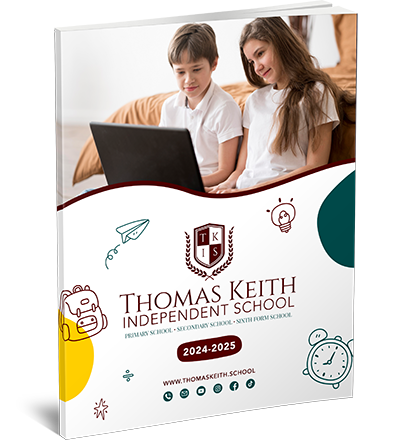
Key Elements to Look for in a British Home Education Planner: A Comprehensive Guide
Essential Features to Consider in a Homeschool Planner
A homeschool planner is an invaluable tool for parents and students, providing structure, organisation, and a record of progress. When choosing the best homeschool planner, it’s important to consider several key features to ensure it effectively supports your homeschooling journey.
Firstly, a comprehensive calendar is crucial. Look for a planner that allows you to easily view and plan your academic year, including holidays, breaks, and important events. A monthly and weekly layout is ideal for tracking daily activities and assignments.
Secondly, ample writing space is essential. The planner should have sufficient room to jot down lesson plans, assignments, and notes. Consider the size and layout of the planner to ensure it accommodates your needs.
Thirdly, customisable sections are beneficial. A homeschool planner should provide areas for tracking subjects, goals, attendance, and extracurricular activities. The ability to personalise these sections based on your specific homeschooling approach will enhance their usefulness.

Moreover, it’s beneficial to have a planner with a durable and portable design. Look for one that comes with a sturdy cover and pages resistant to wear and tear. Plus, its compact size allows you to conveniently carry it wherever you go, helping you stay organised on the move.
Lastly, consider digital integration. Some homeschool planners offer digital versions or companion apps, allowing for easy synchronisation and access across multiple devices. This feature can benefit families who prefer digital organisation or need to share the planner with various caregivers.
Comparing Digital and Paper-Based Homeschool Planners
With the advancement of technology, homeschoolers now have the option to choose between digital and paper-based planners to organise their homeschooling schedules and activities. Each format has advantages and considerations, and understanding the differences can help you make an informed decision based on your preferences and needs.
Digital homeschool planners offer flexibility and convenience. They can be accessed from multiple devices, allowing you to update and sync your schedule easily. Digital planners often come with additional features such as reminders, notifications, and the ability to attach files or links, making them highly versatile. Furthermore, digital planners save physical space and reduce the risk of losing important information.
In contrast, paper-based homeschool planners provide a tangible experience and can help reduce screen time. Writing down schedules, assignments, and goals can enhance memory retention and provide a sense of accomplishment as tasks are physically crossed off. Paper planners also eliminate concerns about technology failures or compatibility issues.
When deciding between digital and paper-based planners, consider your personal preferences and homeschooling style. If you thrive in a digital environment and enjoy the convenience of technology, a digital planner may be a suitable choice. However, a paper-based planner may be ideal if you prefer a tactile experience, value handwriting, or have concerns about technology distractions.
Alternatively, you can also consider a hybrid approach, combining the benefits of both formats. Use a digital planner for scheduling and reminders while maintaining a physical notebook for lesson planning, progress tracking, and reflections.

Organising a Homeschool Schedule with a Planner
Creating and maintaining an organised homeschool schedule is critical to a successful and productive learning environment. A homeschool planner can be a valuable tool in helping you establish and manage your schedule effectively. Here are some tips for organising a homeschool schedule with a planner.
Start by setting clear goals and objectives for each subject or learning area. Determine the desired outcomes and milestones you want to achieve throughout the academic year. Break down these goals into smaller, manageable tasks and allocate them to specific dates or weeks in your planner.
Consider your family’s routine and preferences when creating your homeschool schedule. Determine the optimal time of day for focused learning and allocate that time for core subjects or challenging topics. Plan breaks and incorporate flexible learning activities to maintain engagement and avoid burnout.
Make use of the monthly and weekly views in your planner to plan your schedule. In the monthly statement, mark important dates, holidays, and events. Use the weekly view to assign daily lessons, activities, or projects. Be realistic about the time needed for each task and allow flexibility in case unexpected events arise.
Colour coding can be an effective organisational strategy. Assign different colours to each subject or learning area to visually differentiate them in your planner. This allows for quick reference and helps you identify imbalances or gaps in your curriculum.
Regularly review and update your homeschool schedule. Take note of completed tasks, adjust timelines if necessary, and incorporate any new activities or changes. A planner serves as a record of progress and a reference for future planning, so keeping it current is crucial.
Remember that flexibility is key in homeschooling. Adapt your schedule to accommodate your child’s unique needs and interests. A planner should serve as a guide rather than a rigid framework.
Tracking Progress and Documenting Achievements with a Homeschool Planner
In homeschooling, tracking progress and documenting achievements are vital to evaluating your child’s academic growth and celebrating milestones. A homeschool planner can be invaluable for effectively recording and monitoring these accomplishments. Here’s how to utilise a homeschool planner to track progress and document achievements.
Start by setting clear objectives and learning outcomes for each subject. Break these down into smaller goals and milestones that can be easily tracked. In your homeschool planner, allocate space to record these objectives and mark them as accomplished.
Use your planner to track daily or weekly assignments, assessments, and projects. Record the completion dates and any notable observations or reflections. This will help you identify patterns, strengths, and areas that require additional attention or support.
You might want to include progress charts or trackers in your planner. These visual representations can be used for subjects like math or reading, allowing you to monitor incremental progress over time. Colour-coded graphs or checklists provide a quick overview of your child’s achievements.
Celebrate achievements and milestones by creating a dedicated section in your homeschool planner. This can include certificates, awards, or special notes of recognition. Documenting these accomplishments provides a source of motivation for your child and a comprehensive record of their educational journey.
Regularly review and assess your child’s progress by referencing your homeschool planner. Use the information recorded to evaluate strengths, identify areas for improvement, and adjust your teaching strategies accordingly.
Involve your child in the tracking and documenting process. Please encourage them to record their achievements and reflect on their progress. This promotes a sense of ownership and responsibility for their learning.
Keep in mind that progress encompasses more than just academic accomplishments. Use your homeschool planner to document extracurricular activities, field trips, community service, or personal growth milestones. This comprehensive approach ensures a holistic view of your child’s development.

Recommendations for Affordable and Effective Homeschool Planners
Homeschooling requires careful planning and organisation, and a well-designed homeschool planner can be a valuable tool in keeping your educational journey on track. If you’re looking for a homeschool planner that’s both affordable and effective, here are some recommendations to help you find the ideal one for your needs.
- Printable Planners: Look for downloadable and printable homeschool planners available online. These often come in various layouts and designs, allowing you to customise them according to your preferences. Printable planners are cost-effective and offer the flexibility to print additional pages when needed.
- Bullet Journaling: Consider adopting the bullet journal method to create your homeschool planner. You can design layouts and sections that suit your requirements with a blank notebook. Bullet journaling allows for creativity and customisation, making it an affordable and personalised option.
- Digital Apps: Explore free or low-cost digital planner apps specifically designed for homeschoolers. These apps provide scheduling, tracking, and organising features accessible from your smartphone or tablet. Look for apps with essential elements like calendar integration, task management, and note-taking capabilities.
- Affordable Planner Brands: Research affordable planner brands that cater to homeschoolers. These brands often offer well-designed, budget-friendly options without compromising functionality. Look for features like customisable layouts, durable covers, and ample writing space.
- DIY Planner Templates: Create your homeschool planner using templates available online. Many websites provide free or low-cost templates you can customise and print at home. This option allows you to tailor your planner to meet your homeschooling needs while keeping costs low.







